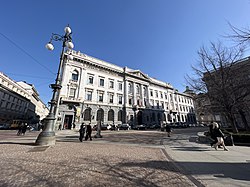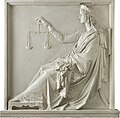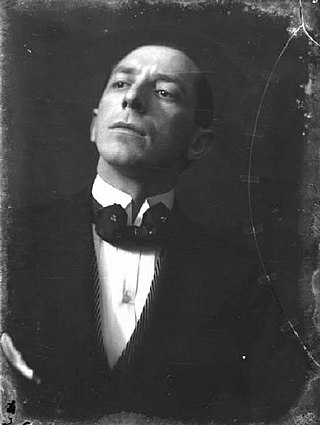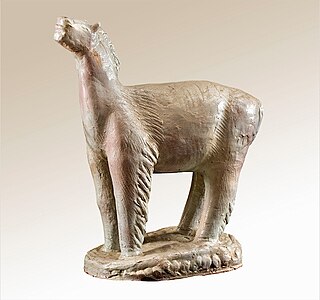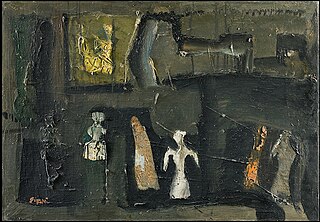- Carla Accardi (Trapani 1924)
- Green Red, 1963, acrylic on canvas, 96.7 x 146 cm
- Valerio Adami (Bologna 1935)
- Auto-suggestion, 1965, acrylic on canvas, 73.3 x 94.3 cm
- Afro (Afro Basaldella) (Udine 1912 - Zürich 1976)
- Unnamed, 1959, mixed media on canvas, 104 x 130 cm
- Red Figure, 1964, mixed media on canvas-backed paper, 69.5 x 99.5 cm
- Vincenzo Agnetti (Milan 1926 - 1981)
- Axiom, 1970, engraving on bakelite slate, 70 x 70 cm
- Carlo Alfano (Napoli 1932 - 1990)
- Fragments of an Anonymous Self Portrait, 1975, mixed media (graphite, acrylic and magnetic tape) on canvas, 69 x 100 cm
- Giuseppe Allosia (Volterra, Pisa 1910 - Genova 1983)
- Untitled, 1959, oil on wood panel, 67.5 x 41 cm
- Getulio Alviani (Udine 1939)
- Surface, circa 1965, screen print on metal, 67 x 64 x 1 cm
- Giovanni Anceschi (Milan 1939)
- Fluid Routes, 1961, polyethylene piping, coloured liquid, lacquered wood, 55 x 55 cm
- Franco Angeli (Rome 1935 - 1988)
- Unum, 1966, mixed media on canvas, 50 x 140 cm
- Rodolfo Aricò (Milan 1930 - 2002)
- Untitled, 1960, oil on canvas, 150 x 150 cm
- General Perspective 2 (For Paolo Uccello), 1970, acrylic on canvas, 98 x 282 cm
- Stefano Arienti (Asola, Mantova 1961)
- Water Lilies, 1990, plasticine on poster mounted on Leger panel, 90 x 121 cm
- Edmondo Bacci (Venice 1913 - 1978)
- Composition, 1960-1961, oil on canvas, 75 x 90 cm
- Enrico Baj (Milan 1924 - Vergiate, Varese 2003)
- Nuclear Landscape, 1951, oil and enamel on canvas glued to masonite, 29 x 52.3 cm
- See in it what you will, 1951, oil and enamel on canvas, 69.7 x 99.8 cm
- Giacomo Balla (Turin 1871 - Rome 1958)
- Abstract Study (Two Palm Trees in the Light), 1920, oil and pencil on wood panel, 37 x 28 cm
- Marina Ballo Charmet (Milan 1952)
- Untitled (dalla serie Out of the corner of the Eye), 1993, photographic print in black and white on metal support, 102 x 153 cm
- Mario Ballocco (Milan 1913 - 2008)
- Lattice, 1951, tempera on paper, 25 x 35 cm
- Luciano Bartolini (Fiesole, Firenze 1948 - Milan 1994)
- Ariadne and Pythagoras, 1987, oil, rice paper, gold leaf and watercolour on paper, 149 x 199 cm
- Gianfranco Baruchello (Livorno 1924)
- Puma skin - Rosa Selamort attacking the City, 1975, pencil, inks, tempera and enamel on aluminium, 150 x 150 cm
- Davide Benati (Reggio Emilia 1949)
- Land of the Morning Calm, 1985, watercolour on paper, 130 x 150 cm
- Vasco Bendini (Bologna 1922)
- Image (Tracks), 1957, oil and mixed media on canvas, 110 x 90 cm
- Gianni Bertini (Pisa 1922 - Caen 2010)
- Untitled, 1950, oil on canvas, 41 x 50 cm
- Something has happened, 1966, photographic print on canvas, 61.5 x 54.5 cm
- Domenico Bianchi (Anagni, Frosinone 1955)
- Untitled, 1991, wax on polyester support and glass fibre, 80 x 60 cm
- Remo Bianco (Milan 1922 - 1988)
- Imprint 15 A, 1960, mixed media on canvas, 100 x 75 cm
- Alberto Biasi (Padova 1937)
- Untitled, 1972, PVC relief (double-layered) on painted wood panel, 68 x 68 x 4 cm
- Guido Biasi (Napoli 1933 - Paris 1982)
- Spectator of a Comet, 1957, oil and enamel on canvas, 150,3 x 99.3 cm
- Annibale Biglione (Settimo Vittone, Turin 1923 - Pietra Ligure, Savona 1981)
- Abstract Work, 1950, tempera on canvas-backed paper, 60 x 41 cm
- Renato Birolli (Verona 1905 - Milan 1959)
- Fire in the Cinque Terre, 1955, oil on canvas, 114 x 122 cm
- Irma Blank (Celle 1934)
- Page, 1977, Indian ink on paper, 23 x 30 cm
- Alighiero Boetti (Turin 1940 - Rome 1994)
- Untitled, 1966, wood, rope, eye bolts, 99.7 x 99.7 cm
- AI IEOOEI LGHRBTT, 1975, blue ball-point pen on canvas-backed paper, two elements, 100 x 70 cm each
- Agostino Bonalumi (Vimercate, Milan 1935)
- Red, 1964, extroflexed canvas and vinyl tempera, 70.5 x 60 x 4.5 cm
- Davide Boriani (Milan 1936)
- Magnetic Surface, 1962, iron, magnets, glass, motor, 46 x 46 cm
- Alberto Burri (Città di Castello, Perugia 1915 - Nice 1995)
- Sand, 1952, mixed media on canvas, 90 x 108.5 cm
- Red Black, 1953, olio, oil, enamels, canvas, pumice sand on canvas, 98.8 x 85.2 cm
- Corrado Cagli (Ancona 1910 - Rome 1976)
- Cellular Rhythm, 1949, tempera on cardboard glued to plywood, 69.2 x 100.5 cm
- Angelo Candiano (Modica, Ragusa 1962)
- Mutant, 1996, photographic print in black and white, 40.5 x 40.5 cm
- Mutant, 1996, photographic print in black and white, 40.5 x 40.5 cm
- Mutant, 1996, photographic print in black and white on paper, incision/cut along a section of the photographed object; inside, blank photographic paper on rigid support, 85.5 x 85.5 cm
- Giuseppe Capogrossi (Rome 1900 - 1972)
- Surface 154, 1956, oil on canvas, 80 x 100 cm
- Carol Rama (Olga Carol Rama) (Turin 1918)
- Untitled, 1961, mixed media on canvas, 40.5 x 30 cm
- Nicola Carrino (Taranto 1932)
- Vertical Construction, 1989, iron, 503.5 x 150 x 165 cm
- Bruno Cassinari (Piacenza 1912 - Milan 1992)
- Still Life with Fish, 1952, oil on backed canvas, 60 x 70 cm
- Enrico Castellani (Castelmassa, Rovigo 1930)
- White Surface (Homage to the Dawn), 1971, acrylic on extroflexed and introflexed canvas, 141 x 212 cm
- Alik Cavaliere (Rome 1926 - Milan 1998)
- Long Live Freedom, 1976, iron, bronze, objects, 227 x 105 x 103 cm
- Umberto Cavenago (Milan 1959)
- Pedestal, circa 1989, whitened, galvanised sheet on wheels, 150 x 40 x 20 cm
- Mino Ceretti (Milan 1930)
- Untitled, 1965, acrylic on canvas, 100 x 100 cm
- Mario Ceroli (Castel Frentano, Chieti 1938)
- Daria, 1967, untreated packaging wood (Russian pine), 175 x 43 x 23 cm
- Sandro Chia (Firenze 1946)
- Little man when you feel comfortable, since you’re in your own home, 1976, pencil, oil and tempera on canvas-backed paper, 80 x 80 cm
- Ennio Chiggio (Napoli 1938)
- Untitled, 1966, acrylic on wood and glass, 49 x 49 x 4 cm
- Alfredo Chighine (Milan 1914 - Pisa 1974)
- Orange Composition on a Blue Background, 1956, oil on canvas, 116.5 x 81 cm
- Francesco Clemente (Napoli 1952)
- Diptych, 18 non-separable photographs, 1973, photographic print on paper, two elements, 26 x 26 cm each
- Untitled, 1980, pencil and pastel on paper mounted on canvas, 45 x 61.7 cm
- Jack Clemente (Novara 1926 - Milan 1974)
- Untitled, 1962, mixed media on canvas, 97 x 130 cm
- Ettore Colla (Parma 1896 - Rome 1968)
- Iron (Polychrome Sculpture or Astro form), 1952, coloured iron, 165 x 130 x 36 cm
- Gianni Colombo (Milan 1937 - Melzo, Milan 1993)
- Fluid Structure, 1960, steel, glass and painted wood, 50 x 50 x 4.5 cm
- Elastic Space, 1970, lacquered wood and elastic, 100 x 100 cm
- Joe Cesare Colombo (Milan 1930 - 1971)
- Untitled, 1952, mixed media on canvas, 79.1 x 100 cm
- Pietro Consagra (Mazara del Vallo, Trapani 1920 - Milan 2005)
- Double-sided Caucasus Moonstone, 1976, Caucasus moonstone, 88.5 x 78 x 24.5 cm
- Antonio Corpora (Tunisi 1909 - Rome 2004)
- Boat under Construction, 1952, oil on canvas, 81,5 x 100 cm
- Toni Costa (Padova 1935)
- Optical Dynamical Structure, 1970, polyethylene and wood, 75 x 75 cm
- Roberto Crippa (Monza 1921 - Bresso, Milan 1972)
- Spirals, 1952, oil on canvas, 100 x 100.5 cm
- Enzo Cucchi (Morro d’Alba, Ancona 1949)
- Untitled, 1993, charcoal on cardboard mounted on canvas, 130 x 70 cm
- Dadamaino (Eduarda Maino) (Milan 1930 - 2004)
- Unstable Visual Object, 1963, milled aluminium and nylon threads, painted wood, 50 x 50 x 5.5 cm
- Sergio Dangelo (Milan 1932)
- La pluie, le beau temps, 1953, enamel on canvas, 44 x 80 cm
- Nicola De Maria (Foglianise, Benevento 1954)
- Untitled, 1992, oil on canvas, 40 x 30 cm
- Bruno De Toffoli (Treviso 1913 - Venice 1978)
- Ritmo nelle forme, 1949, gesso, 203 x 74 x 68 cm
- Gabriele De Vecchi (Milan 1938 - 2011)
- U.R.M.N.T., 1962, metal grid, canvas, plywood and electric motor, 50 x 50 cm
- Lucio Del Pezzo (Napoli 1933)
- Large Writing (metrò), 1962, collage and enamel on wood panel, 146 x 114 cm
- Mario Deluigi (Treviso 1901 - Venice 1978)
- Untitled, 1953-1954, mixed media on wood panel, primed with gesso, 70 x 65.5 cm
- Bruno Di Bello (Torre del Greco, Napoli 1938)
- Photo/graph, 1977, photographic print on canvas, 50 x 35 cm
- Nino Di Salvatore (Verbania 1924 - Milan 2001)
- Active Space, 1949, oil on canvas applied to wood panel, 100 x 80 cm
- Enrico Donati (Milan 1909 - New York 2008)
- White Magma, 1952, mixed media on canvas, 40 x 50 cm
- Piero Dorazio (Rome 1927 - Perugia 2005)
- Plasticity, 1949, mixed media on canvas, 73 x 60 cm
- Snake, 1968, oil on canvas, 175 x 350 cm
- Doric IV, 1971, oil on canvas, 199.5 x 61 cm
- Gillo Dorfles (Trieste 1910)
- Intersection II, 1956, oil on canvas, 55 x 80 cm
- Gianni Dova (Rome 1925 - Pisa 1991)
- Untitled, 1952, oil on canvas, 50 x 40 cm
- Enzo Esposito (Benevento 1946)
- Untitled, 1986, mixed media on canvas, 152 x 200 cm
- Agenore Fabbri (Barba, Pistoia 1911 - Savona 1998)
- Character, 1961, polychrome wood, 85 x 22 x 18 cm
- Luciano Fabro (Turin 1936 - Milan 2007)
- Herb Habitat (A), 1980, Indian ink and watercolour on canvas-backed paper, 60.5 x 80.5 cm
- Herb Habitat (B), 1980, Indian ink, watercolour and pencil on paper, 101 x 68.5 cm
- De Italia, 1972, “riviera” leather, natural colour, 102 x 96 cm
- Vincenzo Ferrari (Cremona 1941 - Milan 2012)
- Doing, 1977, mixed media on wood panel, 45 x 45 cm
- Tano Festa (Rome 1938 - 1988)
- Michelangelo according to Tano Festa, 1967, enamel on canvas, 100 x 80.6 cm
- Giosetta Fioroni (Rome 1932)
- Detail from the Birth of Venus, 1965, oil on canvas, 100 x 200 cm
- Lucio Fontana (Rosario di Santa Fé 1899 - Comabbio, Varese 1968)
- Spatial Concept, 1951 [1949], acrylic on paper glued on canvas, 68 x 70 cm
- Spatial Concept, 1952, mixed media on perforated paper, silver and yellow patches on blue-grey background, 34.5 x 49.5 cm
- Spatial Concept, 1956, sequins on canvas-backed, perforated paper, 58 x 43.5 cm
- Spatial Concept. Expectations, 1959-1960, water-based paint on canvas, white, 64.5 x 42.5 cm
- Spatial Concept: Venice Moon, 1961, oil and glass on canvas, 150 x 150 cm
- Spatial Concept. Expectations, 1964, water-based paint on canvas, white, 53 x 64 cm
- Spatial Concept. Expectations, 1967, water-based paint on canvas, white, 81 x 65 cm
- Spatial Concept, 1967, lacquered, perforated metal, 110 x 110 x 10.5 cm
- Spatial Concept, 1967, lacquered and cut metal, red, h. 128 cm, dia. 49 cm
- Pinot Gallizio (Alba, Cuneo 1902 - 1964)
- Untitled, 1962, oil on cardboard, 50 x 70 cm
- Franco Garelli (Diano d’Alba, Cuneo 1909 - Turin 1973)
- Figure, 1958, iron on wooden base, painted grey, 63 x 20.5 x 16 cm
- Alberto Garutti (Galbiate, Lecco 1948)
- Wood, 1991, mixed media (wood and aluminium), 155 x 120 cm
- Piero Gilardi (Turin 1942)
- Watermelons, 1966, foam, 70 x 100 x 15 cm
- Giorgio Griffa (Turin 1936)
- Painting, 1977, acrylic on canvas, 215 x 230 cm
- Renato Guttuso (Bagheria, Palermo 1912 - Rome 1987)
- Prickly Pears, 1962, oil on canvas, 115 x 146 cm
- Paolo Iacchetti (Milan 1953)
- Aboulia, 1990, oil on canvas, 113 x 185 cm
- Emilio Isgrò (Barcellona Pozzo di Gotto, Messina 1937)
- Untitled, 1972, book, tempera on paper, 39 x 59 cm
- Italian Time, 1986, photo, acrylic and assemblage (clock) on wood panel, 20 elements, dia. 100 cm
- Massimo Kaufmann (Milan 1963)
- Untitled, 1992, mixed media (oil, ink and combustion) on canvas, 100 x 100 cm
- Jannis Kounellis (Pireo, Atene 1936)
- Untitled, 1963, mixed media on canvas, 140 x 165 cm
- Untitled, 1959-1966, tempera on paper, 69.5 x 98.5 cm
- Ketty La Rocca (La Spezia 1938 - Firenze 1976)
- Appendix to an Appeal, 1971, typographical print on paper, two pages, mounted on wood panel, 31 x 34 cm
- Edoardo Landi (San Felice sul Panaro, Modena 1937)
- Orthogonal Structure + Chromatic Influence, 1964, interwoven coloured pieces of light cardboard, 38.5 x 38.5 cm
- Alberto Magnelli (Firenze 1888 - Meudon 1971)
- Avec préméditation, 1947, oil on canvas, 130 x 96.8 cm
- Luigi Mainolfi (Rotondi, Avellino 1948)
- Landscape, 1982, relief in terracotta, 60 x 90 x 16 cm
- Pompilio Mandelli (Luzzara, Reggio Emilia 1914 - Bologna 2006)
- The Verziere, 1955, oil on canvas, 85.5 x 100.5 cm
- Edgardo Mannucci (Fabriano, Ancona 1904 - Arcevia, Ancona 1986)
- Idea, 1963, metal, 62 x 52 x 8 cm
- Piero Manzoni (Soncino, Cremona 1933 - Milan 1963)
- Achrome, 1958, kaolin and wrinkled canvas, 70 x 100 cm
- Giuseppe Maraniello (Napoli 1945)
- Gifts, 1987, bronze, 270 x 110 x 130 cm
- Elio Marchegiani (Siracusa 1929)
- Weights of Colour on Plaster Support, 1974, mixed media on plaster support, 50 x 70 cm
- Enzo Mari (Cerano, Novara 1932)
- Ambiguous Alternation, 1965-1968, light cardboard, corrugated cardboard, polystyrene, methacrylate, 33.5 x 33.5 x 7 cm
- Manfredo Massironi (Padova 1937 - 2011)
- Double Structure with Rotated Squares, 1965, painted cardboard, wood and glass, 53 x 53 x 9 cm
- Vittorio Matino (Tirana 1943)
- Viennese, 1989, acrylic on canvas, 140 x 517 cm
- Fabio Mauri (Rome 1926 - 2009)
- What is a Screen, 1965, oil on canvas, 112 x 123 cm
- Fausto Melotti (Rovereto, Trento 1901 - Milan 1986)
- Couple, circa 1970, brass, 63 x 18 x 14 cm
- Eugenio Miccini (Firenze 1925 - 2007)
- Gods do not like disorder, 1972, mixed media on canvas, 110 x 110 cm
- Umberto Milani (Milan 1912 - 1969)
- Grey, Pink and Blue, 1961, oil on canvas, 100 x 100 cm
- Aldo Mondino (Turin 1938 - 2005)
- Rencontres, 1968, acrylic on canvas, with pencil and black marker, 115.5 x 89.5 cm
- Gianni Monnet (Turin 1912 - Milan 1958)
- Inside, 1947, oil on canvas, 50 x 70 cm
- Mattia Moreni (Pavia 1920 - Brisighella, Ravenna 1999)
- The Quarry, 1955, oil on canvas, 150.5 x 150,5 cm
- Ennio Morlotti (Lecco 1910 - Milan 1992)
- Calendulas, 1955, oil on canvas, 61 x 85 cm
- Bruno Munari (Milan 1907 - 1998)
- Negative-Positive Yellow-Red, 1951, acrylic on canvas, 100 x 100 cm
- Mario Nigro (Pistoia 1917 - Livorno 1992)
- Untitled, 1957, mixed media on paper on canvas, 99 x 73 cm
- Three Reds, 1975, water-based paint on canvas, 81 x 81 cm
- Gastone Novelli (Wien 1925 - Milan 1968)
- Geographical explorations (The Geographical Explorations or Geographical Exploration), 1963, mixed media on canvas, 70 x 90 cm
- The Language of Man, 1963, mixed media on canvas, 100 x 100 cm
- Claudio Olivieri (Rome 1934)
- Untitled, 1972, oil on canvas, 150 x 190 cm
- Luciano Ori (Firenze 1928 - 2007)
- Toccata and Fugue (the ball) - Opus k. 732, 1974, photo (emulsion) on canvas, 95 x 65 cm
- Mimmo Paladino (Paduli, Benevento 1948)
- North Sea, 1985, mixed media (iron and wood) and oil on wood, 121 x 86 cm
- Giulio Paolini (Genova 1940)
- Demonstration, 1975, metal music stands; photographic prints; sheets of plexiglas
- Narcissus, 1982, photograph on emulsion-coated canvas, 137 x 204 cm (two elements, 137 x 102 cm each)
- Gianfranco Pardi (Milan 1933 - 2012)
- Apse, 1981, acrylic on canvas, 119 x 200 cm
- Architecture, 1990, painted iron, 160 x 82 x 50 cm
- Claudio Parmiggiani (Luzzara, Reggio Emilia 1943)
- Towards Byzantium, 1985, chalk and colour maps, 38.5 x 35 x 33 cm
- Pino Pascali (Bari 1935 - Rome 1968)
- Rock, 1966, wood and painted canvas, 35 x 133 x 39 cm
- Bristleworm, 1967, sixteen acrylic bristle brushes on metal support, 27.5 x 178.5 x 35 cm
- Giuseppe Penone (Garessio, Cuneo 1947)
- Writes/Reads/Remembers, 1972, colour photographs in wooden frames and a steel bar with a wooden base, 35 x 70.5 x 13 cm
- Achille Perilli (Rome 1927)
- Top of the Void, the Solidity of Silence, 1961, mixed media on canvas, 200 x 160 cm
- Cesare Peverelli (Milan 1922 - Paris 2000)
- Painting, 1952, tempera on paper, 48 x 66 cm
- Michelangelo Pistoletto (Biella 1933)
- Girl Walking, 1966, screen print on mirror-polished stainless steel, 230 x 120 cm
- Enrico Prampolini (Modena 1894 - Rome 1956)
- Composition, 1949, oil on canvas-backed paper, 63 x 46 cm
- Mario Raciti (Milan 1934)
- Story, 1963, mixed media on canvas-backed paper, 50 x 70 cm
- Mauro Reggiani (Nonantola, Modena 1897 - Milan 1980)
- Composition no. 12, 1950, oil on canvas, 65 x 81 cm
- Regina (Regina Prassede Cassolo Bracchi) (Mede Lomellina, Pavia 1894 - Milan 1974)
- MAC (or Untitled), 1953, collage on paper, 21 x 17 cm
- Structure (Cosmodrome), 1952, painted wood and brass, wire and plexiglas, 27 x 26 x 20 cm, wooden base 18 x 26 x 2 cm
- Bepi Romagnoni (Milan, 1930 - Villasimius, Cagliari 1964)
- Story, 1963, oil and collage on canvas-backed paper, 100 x 80 cm
- Mimmo Rotella (Catanzaro 1918 - Milan 2006)
- Untitled, [1948], mixed media on wood panel, 50 x 40 cm
- Mythology in Black and Red, 1962, décollage on canvas, 135 x 98 cm
- Piero Ruggeri (Turin 1930 - Avigliana, Turin 2009)
- Head, 1958, oil on canvas, 70 x 50 cm
- Remo Salvadori (Cerreto Guidi, Firenze 1947)
- In the Moment, 1988, lead foil, bent, 99 x 97.7 x 3.2 cm
- Antonio Sanfilippo (Partanna, Trapani 1923 - Rome 1980)
- Composition, 1955, oil on canvas, 60 x 80 cm
- Giuseppe Santomaso (Venice 1907 - 1990)
- Green Memory, 1953, oil on canvas, 120.2 x 150 cm
- Emilio Scanavino (Genova 1922 - Milan 1986)
- Virginity, 1960, oil on canvas, 146 x 120 cm
- Paolo Scheggi (Firenze 1940 - Rome 1971)
- For a Situation, 1962, acrylic on perforated, superimposed canvases, 50 x 60 cm
- Mario Schifano (Homs 1934 - Rome 1998)
- Last Autumn, 1963, mixed media on canvas, 179 x 140 cm
- Futurism Revisited, 1966, perspex and mixed media on paper, 100 x 52 cm
- Toti Scialoja (Rome 1914 - 1998)
- White Imprints, 1959, mixed media on hemp, 114 x 236 cm
- Atanasio Soldati (Parma 1896 - 1953)
- Composition, 1951, oil on canvas, 50 x 60 cm
- Ettore Spalletti (Cappelle sul Tavo, Pescara 1940)
- Evening Sky, Peach Blossoms, Spring, 1983, impasto on wood panel, three elements, 81 x 100.5 cm each
- Domenico Spinosa (Napoli 1916 - 2007)
- Trees and Sun, 1959, oil on wood panel, 97 x 80 cm
- Mauro Staccioli (Volterra, Pisa 1937)
- Untitled, 1989, ferrocement, 110 x 350 x 50 cm
- Tancredi (Tancredi Parmeggiani) (Feltre, Belluno 1927 - Rome 1964)
- Untitled, 1953, mixed media and pastels on Fabriano paper, 70 x 100 cm
- Untitled, 1955, oil on masonite, 125 x 170.5 cm
- Marco Tirelli (Rome 1956)
- Untitled, 1993, mixed media on canvas, 150 x 110 cm
- Grazia Toderi (Padova 1963)
- There was something of the fairy in her, and nothing is more unbearable, judging by fairy tales, than living with a fairy..., 1994, cibachrome on aluminium, 80 x 120 cm
- Giulio Turcato (Mantova 1912 - Rome 1995)
- Untitled, 1960, oil and sand on canvas, 65 x 92 cm
- Wooden Structure, 1985, painted wood, 333 x 120 x 120 cm
- Giuseppe Uncini (Fabriano, Ancona 1929 - Trevi, Perugia 2008)
- Shadow and Two Parallelepipeds T. 6, 1973, concrete and laminated wood, 180 x 75 x 35 cm
- Shadows of Two Parallelepipeds, 1975, concrete and laminated wood, 71 x 145 x 12 cm
- Franco Vaccari (Modena 1936)
- Exhibition in Real Time no. 8: Homage to Ariosto, 1974, photographic print on paper, five elements, 60 x 80 cm each
- Sergio Vacchi (Castenaso di Bologna, Bologna 1925)
- The Foundations, 1956, oil on canvas, 114.5 x 159 cm
- Valentino Vago (Barlassina, Monza e Brianza 1931)
- E 174, 1973, acrylic on canvas, 81 x 65 cm
- Grazia Varisco (Milan 1937)
- Variable Luminous Pattern R. VOD, 1962, neon, plastic, motor, 35 x 40 x 8 cm
- Emilio Vedova (Venice 1919 - 2006)
- Disturbed Space T. 1, 1957, tempera grassa on canvas, 134.5 x 167.9 cm
- Spain. Homage to Machado, 1959-1960, oil on canvas, 129.7 x 57.7 cm
- Luigi Veronesi (Milan 1908 - 1998)
- Suspended no. 2, 1953, tempera on paper, 50 x 69.5 cm
- Franco Vimercati (Milan 1940 - 2001)
- Tureens, 1983, photographic print on paper, six elements, 18.7 x 24 cm each
- Silvio Wolf (Milan 1952)
- Green Light/Orthogonal, 1989, mixed media (cibachrome print, lead, zinc, plastic laminates), 97 x 151 x 4 cm
- William Xerra (Firenze 1937)
- Stet, 1977, mixed media on temporary frame, 68 x 53 cm
- Gilberto Zorio (Andorno Micca, Biella 1944)
- Beach, 1972, pencil, acrylic, tin foil on canvas-backed paper, 70 x 200 cm
|
